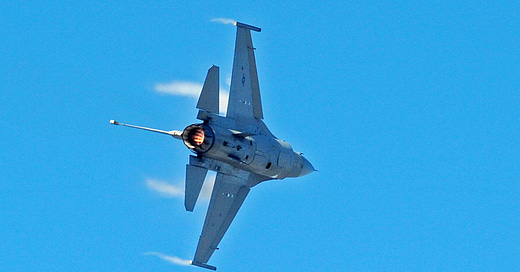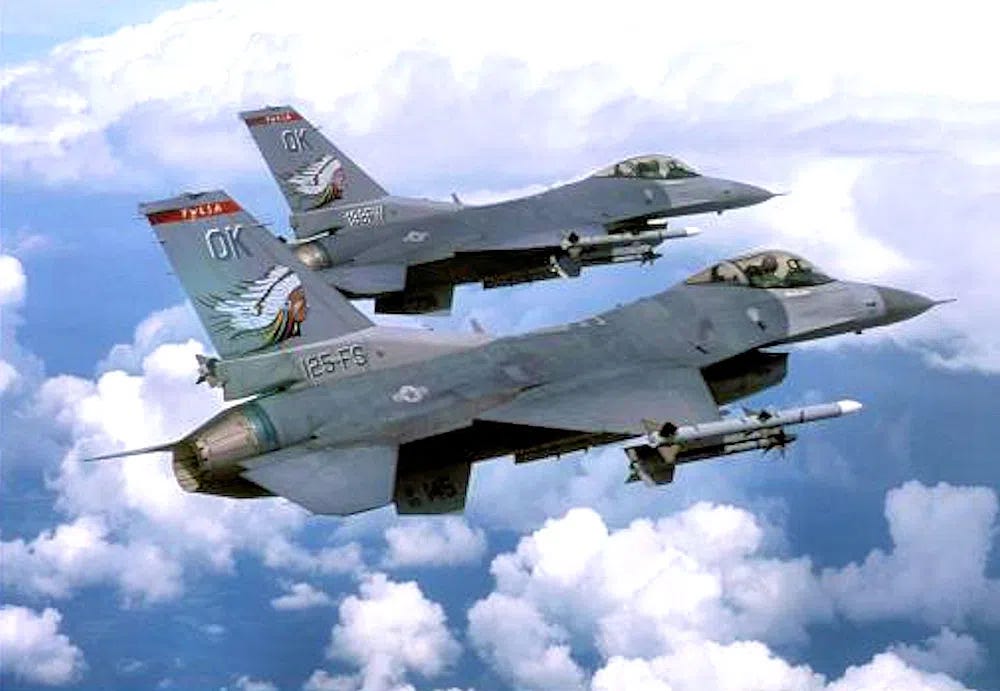Air-to-air dogfighting involves intense maneuvering in three dimensions, with much of a fight spent under heavy g-loads.
Pulling G’s generates massive drag; a hard turn will quickly reduce your airspeed. The newer fighters of my era (F-15s, F-16s, and F-18s) were the first fighter aircraft with enough available thrust to sustain speed during high-g turns. These newer jets produced thrust in full afterburner that provided a greater than one-to-one thrust-to-weight ratio.
In my previous post, I commented that an F-14 had just one good turn before running out of energy. The reason was the F-14 depleted too much speed during a hard turn, leaving it flying too slow to maneuver effectively.
In the case of air-to-air warfare, “effective maneuvering” means violent maneuvering. To get a shot on an adversary, you need to get in position to get a radar lock and either a good missile tracking solution or get the gun pipper tracking on the other aircraft long enough to fire an effective cannon burst.
Of course, the pilot of the other jet is trying to do the same. Whoever gets behind the other in a position to make an effective shot wins the dogfight.
So, how do you turn tighter than your opponent?
This brings us to the concept and implementation of a jet’s corner velocity.
Corner velocity is defined as the slowest speed at which an aircraft can pull the maximum rated g-load.
A max-g turn at corner velocity gives the smallest turn radius that an aircraft can fly. For fighters developed before the F-16, corner velocity was a single number, and flying either slower or faster would produce a larger turn circle.
The fly-by-wire system of the F-16A brought a significant change to the dogfighting game. The computer-controlled flight control system limited F-16 maneuvers to a maximum of 9 Gs and a maximum angle of attack of 25 degrees. These limitations left a highly maneuverable jet that couldn’t be over-g’d or go out of control.
With the computer system, the F-16A corner velocity expanded to a range of 330 KIAS to 440 KIAS.
At 330 knots, the F-16 would hit 25 degrees AOA at 7.3 G’s. If you were flying slower than 330, you would hit 25 AOA at a lower g-load.
At 440 knots, you could pull 9.0 G’s at 25 degrees AOA. If you fly faster than 440, the 9.0 G limit would come at a lower angle of attack.
The result of the computer flight control setup produced a turning radius that was basically the same size from 330 knots to 440 knots. A very small turn circle!
As a result, my goal would be to enter a dogfight at around 440-450 knots. Even at that speed, I could make a very small, 9-g painful turn. If the fight dictated, I could also let 100 knots of speed bleed off, and I would still have maximum maneuverability.







Impressive post Tim!
I just can't imagine pulling 7 to 9 G's - it must be painful. How do you not black out???